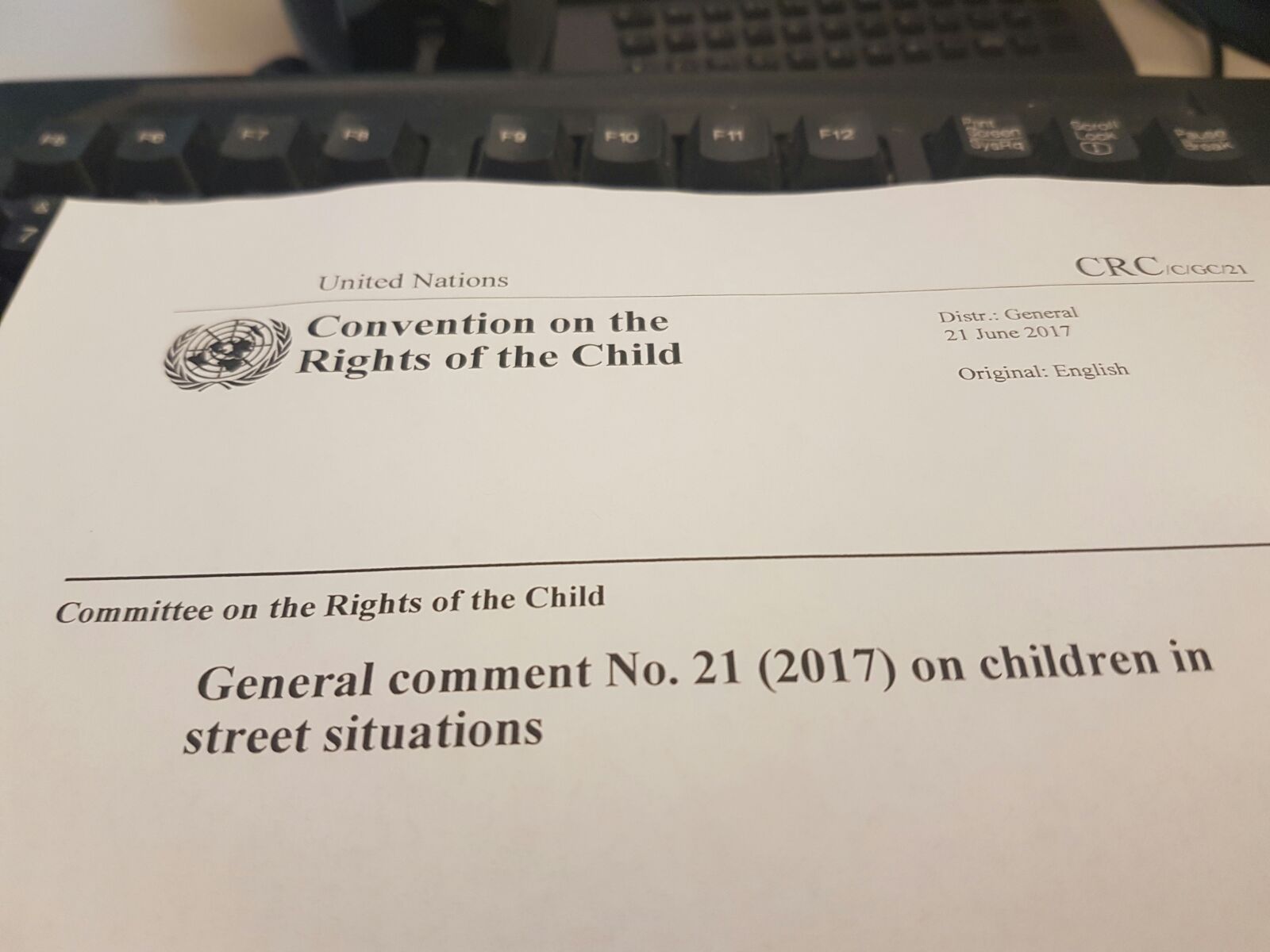UN Committee to governments: institutionalisation of children in street situations should be a last resort

Despite the lack of reference to children in street situations in the Convention on the Rights of the Child, the Committee on the Rights of the Child (UN CRC) has regularly expressed its concern about the rights and welfare of children in street situations and their families. So too have NGOs, researchers and child rights advocates. However, there has never been an authoritative interpretation of the UN Convention on the Rights of the Child in relation to children in street situations – until now.
The new General Comment
The UN CRC released its most recent General Comment No. 21 (2017) on Children in Street Situations. This comes two decades after the UN General Assembly first called for a General Comment on the situation of children in street situations. Stahili, along with its partner, the Lori E. Talsky Center for Human Rights of Women and Children, provided its views in a joint submission transmitted to the UN CRC in April 2016.
The purpose of the Comment is to guide countries on developing national strategies on children in street situations by using rights-based approaches. Such approaches would ensure that children’s right to dignity, life, survival, well-being, health and development, participation and non-discrimination are respected.
All children count, but not all children are counted
Children living in street situations are often not recorded in official statistics and so fall off the map when it comes to international policies on children’s rights. As the Comment recognises, an unknown number of children live in street situations globally. Data is not systematically collected or disaggregated and estimates fluctuate based on definitions used. The alarming absence of data leads to undeveloped policies and measures which are often ad hoc, temporary, or short-term.
Global efforts, are, however underway to count all children. In 2016, Stahili joined nearly 300 organisations calling for an improved global monitoring framework for assessing the needs of the most vulnerable and hard-to-reach populations, including children living in street situations.
Institutionalisation as a last resort
Although the Comment addresses a wide array of issues pertaining to the rights of children in street situations, importantly, it also addresses the need for family reunification for children in street situations, as well as a range of alternative care options and adoption. While governments are required to ensure that children are not forced to turn to street connections for their survival, according to the Comment, they must also respect the established international parameters that limit institutionalisation as a last resort and ideally temporary measure. Governments are required to ensure that children are not placed in institutions unnecessarily and that where alternative care is provided, it should be provided in a way that responds to the best interests of a child. The Comment stresses that deprivation of liberty in detention cells or closed centers is “never a form of protection”.
Keeping families together
Many children living in street situations live with their families, either off or on the streets, and maintain those family relationships. Accordingly, the Comment provides that governments should not separate children from families on the sole basis of their “street working or street-living status”. It stresses that “[f]inancial and material poverty […] should never be the only justification for the removal of a child from parental care but should be seen as a signal for the need to provide appropriate support to the family”. The Comment also stresses that states can use temporary, rights-respecting care options for children whose parents migrate for seasonable employment. Governments should also not separate children born to children living in street situations.
Strengthening family-based support
The Comment also recognises the need for prevention and early prevention as mutually reinforcing elements to prevent separation and strengthen family reunification programmes for children already in street situations. Governments are required to render appropriate assistance to parents and legal guardians in their performance of their child-bearing responsibilities. The UN CRC further provides that governments should invest in and scale up family support programmes and provide universal education on child rights and positive parenting for both parents and caregivers.
Addressing structural causes of poverty
The UN CRC emphasises the need for governments to reduce pressure on and strengthen precarious family situations by taking measures to address the structural causes of poverty and income inequalities. It notes child benefit programmes and cash transfer programmes as examples of good practices while stressing that efforts must be able to reach those most marginalised who may not have bank accounts. It also notes that measures to secure maintenance for the child are particularly important for single parents and reconstructed families.
Better policies, better interventions and better results for children in street situations, as well as for children at risk of moving on to the streets, are needed by taking a rights-based approach. According to the UN CRC, “[a]pplying this approach is not only a moral and legal imperative but the most sustainable approach”.
Note: The UN CRC provides that “[in] the past, the terms used to describe children in street situations have included ‘street children’, ‘children on the street’, ‘children of the street’, ‘runaway children’, “throwaway children’, ‘children living and/or working on the street’, ‘homeless children’ and ‘street-connected children’”. The General comment uses the term “children in street situations” to cover “children who depend on the streets to live and/or work, whether alone, with peers or with family” as well as a “wider population of children who have formed strong connections with public spaces and for whom the street plays a vital role in their everyday lives and identities”.